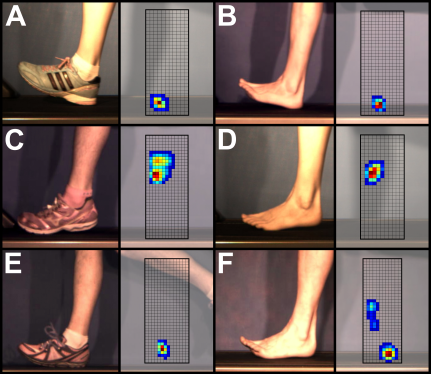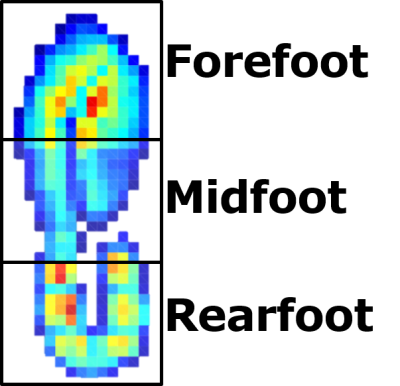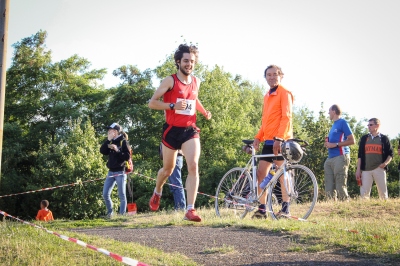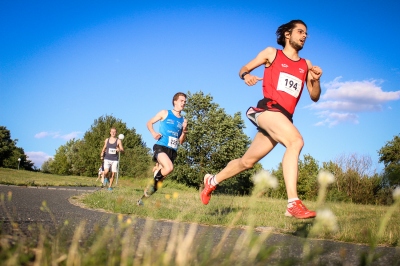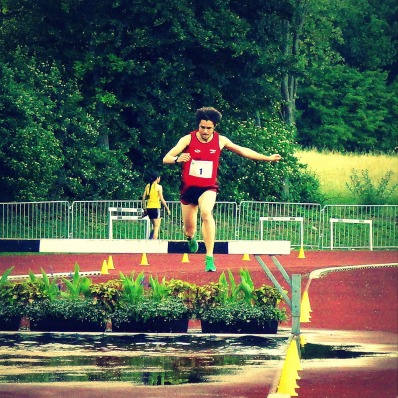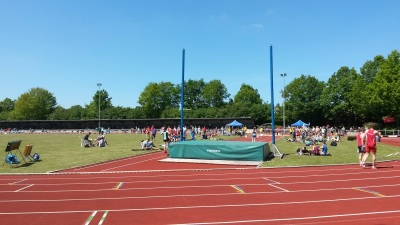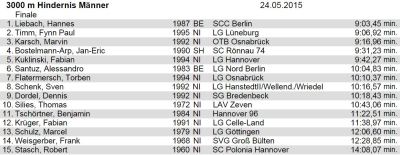The heel-to-toe drop
In the lab, I often have the chance to play around with many different parameters related to running. Shoes certainly incorporate several of these and, especially for non-scientific audience, are reason for great interest. Independently on whether this is a good thing or not, it is no secret that in the past few decades we have been strongly influenced by the media and the shoe companies to wear cushioned shoes with relatively big drop. For the newbies of running, the heel-to-toe drop is the difference between the stack height at the heel and at the ball of the foot. You can read a detailed explanation in this article of mine. The drop can have very different values depending on the shoe (in this other blog post I present a fair amount of values for a quite wide range of models). To get an order of magnitude, values range from zero to fifteen millimetres. However, the most common settings oscillate between 10 and 15 mm, in an interval considered of “high drop”.
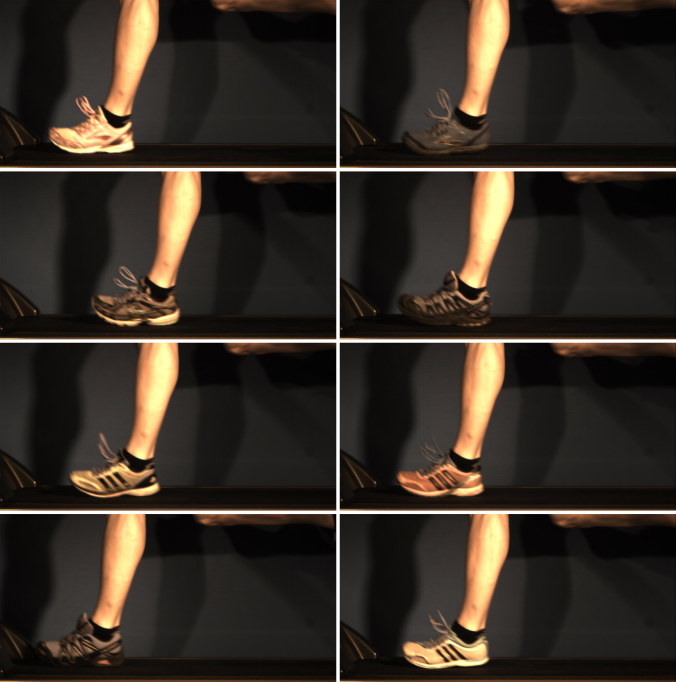
Same subject, different shoes.
The science of shoe’s drop
It is very likely that, if you are reading these lines, you asked yourself at least once whether the drop is an important parameter in a shoe. Honestly, I asked myself the very same question quite often in the past years and luckily had the tools to get some quick answers. In 2013, after analysing a dataset we never published, I found that shoe model did not influence important variables such as the foot strike pattern1. However, the conclusion that the drop was the sole responsible for this lack of correlation was impossible to justify. In order to correctly tackle the question, participants should have worn the same shoes and even if our sample size was pretty big (around 300 participants), we did not design the study for this purpose and my curiosity remained partially unsatisfied.
The years passed by and it was not until recently that I found two interesting works: one by Malisoux and colleagues, from the Luxembourg Institute of health2 and the other by Nigg and colleagues, from the University of Calgary3. Just a few studies4 really focus on the shoe drop and very often one can read about comparison between standard and minimalist shoes5–16 without any proper attention to the drop itself. Malisoux and colleagues, though, did something quite specific. They divided their 59 participants into three groups and assigned to each group shoes with 10, 6 or 0 mm of drop. An inclusion criterion was that they should not have used low drop (< 10 mm) shoes in the past 12 months. Important thing is, that the researchers tried to keep shoes similar, despite the differences in drop. Similar weight (308, 318 and 330 g), comparable rigidity and anonymised features. Moreover, the Luxembourger group proceeded with a follow-up after six months (or 500 km) ran in the very same shoes used for the first measurements. This is what is called a longitudinal study. Nigg, together with his colleagues, opted for a cross-sectional design: they recruited 35 runners, all of them being rearfoot strikers. Then they had each participant running on a treadmill barefoot and wearing three different shoes: a minimalist with drop < 3 mm (weight around 200 g), a conventional cushioned shoe with drop of around 14 mm (weight circa 300 g) and a racing flat (drop of 3 mm, weight of 110 g). Both groups, in both studies, found that the running style was basically unaffected by the changes in the characteristics of shoes.
Take home message
What the group of Malisoux concluded, is that changes of drop in standard cushioned shoes did not produce any significant biomechanical differences. Not even after a 6-month adaptation. Flight time, stride frequency, stride length, foot angle at contact…nothing. Just a tiny little difference in the knee abduction angle during the midstance. In a similar fashion, Nigg and his colleagues found that the vast majority of runners did not see changes in their preferred movement path when changing shoes.
Could it be that we are all overestimating the importance of the drop in running shoes? Contemporary science suggests we might.
References
- Santuz, A., Ekizos, A. & Arampatzis, A. A Pressure Plate-Based Method for the Automatic Assessment of Foot Strike Patterns During Running. Ann. Biomed. Eng. 44, 1646–1655 (2016).
- Malisoux, L., Gette, P., Chambon, N., Urhausen, A. & Theisen, D. Adaptation of running pattern to the drop of standard cushioned shoes: a randomised controlled trial with a 6-month follow-up. J. Sci. Med. Sport 1–6 (2017).
- Nigg, B. M. et al. The Preferred Movement Path Paradigm. Med. Sci. Sport. Exerc. 49, 1641–1648 (2017).
- Chambon, N., Delattre, N., Guéguen, N., Berton, E. & Rao, G. Shoe drop has opposite influence on running pattern when running overground or on a treadmill. Eur. J. Appl. Physiol. (2014).
- Firminger, C. R. & Edwards, W. B. The influence of minimalist footwear and stride length reduction on lower-extremity running mechanics and cumulative loading. J. Sci. Med. Sport (2015).
- Fredericks, W. et al. Lower Extremity Biomechanical Relationships with Different Speeds in Traditional, Minimalist, and Barefoot Footwear. J. Sport. Sci. Med. 14, 276–283 (2015).
- Bergstra, S. A. et al. Running with a minimalist shoe increases plantar pressure in the forefoot region of healthy female runners. J. Sci. Med. Sport 18, 463–468 (2015).
- Willson, J. D. et al. Short-Term Changes in Running Mechanics and Foot Strike Pattern After Introduction to Minimalistic Footwear. PM&R 6, 34–43 (2014).
- Gillinov, S. M., Laux, S., Kuivila, T., Hass, D. & Joy, S. M. Effect of Minimalist Footwear on Running Efficiency: A Randomized Crossover Trial. Sports Health 7, 256–60 (2015).
- Squadrone, R., Rodano, R., Hamill, J. & Preatoni, E. Acute effect of different minimalist shoes on foot strike pattern and kinematics in rearfoot strikers during running. J. Sports Sci. 33, 1196–204 (2015).
- Willy, R. W. & Davis, I. S. Kinematic and kinetic comparison of running in standard and minimalist shoes. Med. Sci. Sport. Exerc. 46, 318–323 (2014).
- Mann, R. et al. The effect of shoe type and fatigue on strike index and spatiotemporal parameters of running. Gait Posture 42, 91–95 (2015).
- Cheung, R. T. H. & Ngai, S. P. Effects of footwear on running economy in distance runners: A meta-analytical review. J. Sci. Med. Sport (2015).
- Sinclair, J. Effects of barefoot and barefoot inspired footwear on knee and ankle loading during running. Clin. Biomech. 29, 395–399 (2014).
- Rice, H. M., Jamison, S. T. & Davis, I. S. Footwear Matters: Influence of Footwear and Foot Strike on Loadrates During Running. Med. Sci. Sport. Exerc. 44, 1 (2016).
- Miller, E. E., Whitcome, K. K., Lieberman, D. E., Norton, H. L. & Dyer, R. E. The effect of minimal shoes on arch structure and intrinsic foot muscle strength. J. Sport Heal. Sci. 3, 74–85 (2014).
